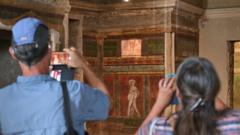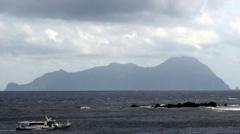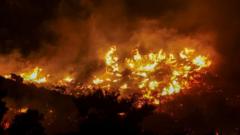The archaeological site of Pompeii, renowned for its preservation after the catastrophic eruption of Mount Vesuvius in 79 AD, is set to implement a daily visitor limit of 20,000 starting November 15. This decision comes on the heels of a record attendance, with 36,000 tourists flocking to the site on a recent free-entry Sunday. The increase in visitors has been significant, with nearly four million people visiting Pompeii in 2023—a sharp rise compared to previous years, as travel rebounds following the pandemic. Current visitor trends indicate an average of around 15,500 per day, with peaks occurring in busy months like May. The park’s director, Gabriel Zuchtriegel, emphasized that the limit aims to protect the ancient site from the detrimental effects of overcrowding while further excavation efforts continue. The impending cap will likely lead to minimal delays for tourists, as peak numbers have mostly exceeded thresholds on special free entry days. Tickets currently start at €18. As archaeological work reveals more about daily Roman life, Pompeii remains a focal point for historical research and public curiosity.
Pompeii Introduces Daily Visitor Limit of 20,000 Amid Surge in Tourism

Pompeii Introduces Daily Visitor Limit of 20,000 Amid Surge in Tourism
In response to overwhelming tourist numbers, Pompeii's management announces a cap on daily visitors effective November 15.
Measures for Conservation and Safety
The park’s initiative underscores the delicate balance between promoting tourism and ensuring the site’s preservation.
Pompeii’s draw to both casual tourists and serious scholars is akin to a living museum, providing critical insights into life during the Roman Empire through both its preserved buildings and ancient artworks.
The park’s initiative underscores the delicate balance between promoting tourism and ensuring the site’s preservation.
Pompeii’s draw to both casual tourists and serious scholars is akin to a living museum, providing critical insights into life during the Roman Empire through both its preserved buildings and ancient artworks.




















